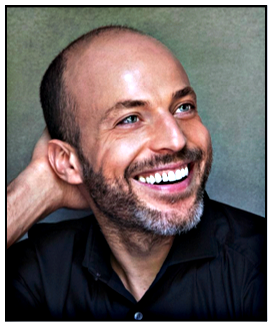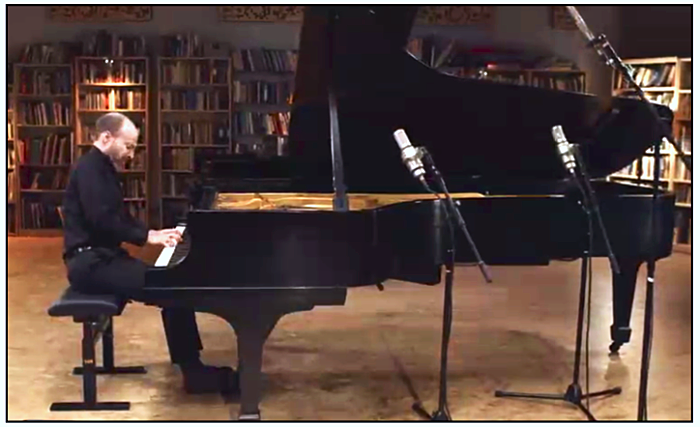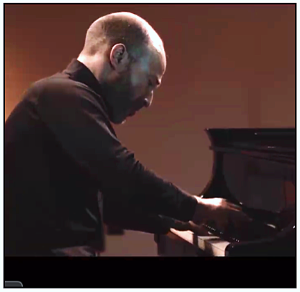Music Educators Association of New Jersey
Serving teachers and students since 1927



 Enthusiastic and totally unassuming, Orion Weiss (yes, as in the constellation Orion) gave a stellar presentation of Debussy’s Douze (12) Études to a very appreciative MEA-NJ Zoom audience. Considered the “black sheep” of Debussy’s piano repertoire, the études are rarely performed and are not for the feint of heart or the inexperienced.
Enthusiastic and totally unassuming, Orion Weiss (yes, as in the constellation Orion) gave a stellar presentation of Debussy’s Douze (12) Études to a very appreciative MEA-NJ Zoom audience. Considered the “black sheep” of Debussy’s piano repertoire, the études are rarely performed and are not for the feint of heart or the inexperienced.
The names of the études simply describe their technical aspects: No. 1 — Pour les cinq doigts—d’après Monsieur Czerny (five fingers— after Mr. Czerny); No. 2 — les tierces (3rds); No. 3 — les quartes (4ths); No. 4 — les sixtes (6ths); No. 5 — les octaves; No. 6 — les huit doigts (eight fingers, presumably four on each hand); No. 7 — les degrès chromatique (chromatic steps); No. 8 — les agréments (ornaments); No. 9 — les notes répétées (repeated notes); No. 10 — les sonoritiés opposées (opposing sonorities); No. 11 — les arpèges composés (composed arpeggios); and No. 12 — les accords (chords).
Despite their names, they are anything but ordinary. It is difficult to discern where Debussy is going with the music or what his intentions are. Written in 1915 during World War I, they convey joy, humor, surprise, melancholy and a host of emotions that are expressed through incredible technical challenges — almost gymnastic at times. Dynamics change abruptly, hands leap over one another, and fingering is never indicated. Debussy gives the pianist the freedom to choose what fingering works and affords many opportunities to experiment. In fact, Debussy said, “These pieces terrify the fingers.” Although the music overall sounds very free of form and design, Debussy is very precise with detailed notation of articulation. These études are indeed very unlike Czerny exercises with their German structural logic and repetition. These are dramatic and reflect Debussy’s emotional logic and passion. Debussy was distraught over the war and felt he needed to react with beauty — his kind of beauty.

Orion’s playing of the études is simply glorious, with rich color, tonal sensitivity and digital dexterity. He expertly expresses the humor and whimsy of No. 1 (five fingers), for example, which pokes fun at the penta-patterns. The RH crosses over the LH to play an A flat, almost comically, as though one could see Mozart attacking the black key with his nose. “It is tough to get to all the notes as Debussy intended,” Orion states, relieved.
The No. 2 étude (3rds) starts more pensively, with snake-like wanderings in the opening. It contains frequent key changes, as do many of the études, and ends really furiously Animado with Molto stretto. Orion presented his étude performances via professional videos and was able to show the scores alongside them. This was very effective since we were simultaneously able to watch him as well as the music. He also played the No. 3 (4ths), a very mysterious sounding piece with exotic Far Eastern sonorities; the No. 6 (eight fingers) which usually excludes the thumbs; and No. 11 (composed arpeggios) in which not one “normal” arpeggio is heard until the very end!
Midway, Orion introduced La Boite à Joujeux, literally the box of toys, or Toy Box. Reminiscent of The Nutcracker, the toys in a store wake up from the box and become animated characters who tell a story. Debussy wrote the music to this ballet before the études and it serves as a jumping off point in terms of imagination, styles of articulation, etc. More accessible than the études, this, Orion felt, would be very helpful to the student who wants to master the études, or at least try to tackle them.
 What type of piano is best suited to these études? Because of their extreme diversity, one piano would not be suitable for all 12; Debussy makes demands on the piano as well as the pianist. Which publication of the études would Orion recommend? The one recently published by Durand and certainly not the Henle (too German!).
What type of piano is best suited to these études? Because of their extreme diversity, one piano would not be suitable for all 12; Debussy makes demands on the piano as well as the pianist. Which publication of the études would Orion recommend? The one recently published by Durand and certainly not the Henle (too German!).
In closing, the audience was treated to a new recording titled Ut re mi fa sol Variations, written by J.P. Sweelinck in 1612, before Bach! It was another glorious performance by an artist who is widely recognized as a “brilliant pianist” with outstanding credentials. Do peruse his website orionweiss.com for more information, especially his musical accomplishments, and to see his new trilogy of recordings: Arc I, II and III.
Charlene Step
Writer and Page Designer